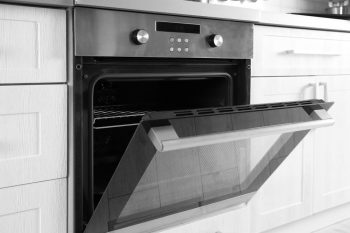
Circuit breakers are an essential part of any home’s electrical system, acting as a safety mechanism to protect against electrical overloads and short circuits. But how many homeowners truly understand how to read a circuit breaker? This article aims to provide a comprehensive guide on how to read, understand, and troubleshoot circuit breakers.
To read a circuit breaker, first locate your circuit breaker panel, usually found in basements, utility rooms, or garages. Open the panel to reveal a series of switches, each representing a circuit breaker. Each breaker should have a label indicating the circuit it controls, and a maximum amperage rating. If a breaker has tripped, it will be in the OFF position. To reset it, switch the breaker all the way to the OFF position, then switch it back to the ON position.
What is a Circuit Breaker?
A circuit breaker is an electrical safety device designed to protect an electrical circuit from damage caused by an overload or short circuit. Its primary function is to interrupt the current flow after a fault is detected. Unlike a fuse, a circuit breaker can be reset to resume normal operation.
How Does a Circuit Breaker Work?
A circuit breaker operates on two different principles: thermal and magnetic. In a thermal-magnetic circuit breaker, the trip unit includes elements designed to sense the heat resulting from an overload condition and the high current resulting from a short circuit. When the current exceeds the preset limit, the circuit breaker “trips” and severs the electricity supply as quickly as possible.
Types of Circuit Breakers
Understanding the different types of circuit breakers can help you identify the type you have in your home. Here are the three main types:
- Standard Circuit Breakers: Monitor the amp capacity of the devices they operate and interrupt the current in the event of an overload or short circuit.
- Ground Fault Circuit Interrupters (GFCIs): Protect against ground faults by monitoring the difference in current between the hot and neutral wires, tripping when an imbalance is detected.
- Arc Fault Circuit Interrupters (AFCIs): Protect against arc faults by detecting unintended electrical arcs and disconnecting the power before the arc starts a fire.
Reading a Circuit Breaker
Now that we understand what a circuit breaker is and how it works, let’s delve into how to read a circuit breaker.
- Locate the Circuit Breaker Panel: Typically, this is a grey or brown metal box with a door, often found in basements, utility rooms, or garages.
- Open the Panel Door: Inside, you’ll see a series of black boxes with switches arranged vertically. These switches are the circuit breakers.
- Read the Labels: Each breaker should have a label indicating the circuit it controls. These may refer to specific appliances or rooms.
- Understand the Breaker Ratings: Circuit breakers have a maximum amperage rating, often denoted as 5KA or 10KA, indicating the maximum current the breaker can handle before tripping.
- Identify the Main Breaker: The main breaker is typically larger than the individual circuit breakers and controls the overall power supply to your home.
- Reset a Tripped Breaker: If a breaker has tripped, it will be in the OFF position. To reset it, switch the breaker all the way to the OFF position, pause for a moment, and then switch it back to the ON position.
Troubleshooting Circuit Breaker Issues
If the breaker continues to trip after resetting, it’s time to troubleshoot. Overloaded circuits, short circuits, and ground faults are the most common causes of a tripped breaker. If you can’t identify or fix the issue, it’s best to consult a licensed electrician.
Maintaining a Circuit Breaker
Regular inspections, cleaning, lubrication, and testing according to the manufacturer’s specifications can help maintain the safety and reliability of your circuit breakers, extend their lifespan, and reduce the cost of repairs through preventative maintenance.
Conclusion
Understanding how to read a circuit breaker is crucial for homeowners to maintain the safety and efficiency of their electrical systems. By following this guide, you can identify and troubleshoot common issues and ensure your circuit breakers function well over time. Always consult a professional electrician if you’re unsure about any aspect of working with circuit breakers.
Frequently Asked Questions
What causes a circuit breaker to trip?
A circuit breaker can trip due to several reasons, including an overloaded circuit, short circuit, or ground fault. Overloaded circuits occur when too many devices are plugged into a single circuit, exceeding its capacity. Short circuits happen when a hot wire (black) touches another hot wire or touches a neutral wire (white). Ground faults occur when a hot wire touches a ground wire (bare copper) or the metal box that houses the wiring.
Can I replace a circuit breaker myself?
While it’s technically possible to replace a circuit breaker yourself, it’s highly recommended to hire a professional electrician. Working with an electrical panel can be dangerous if not done correctly, leading to potential electrical shocks or fires.
How often should I inspect my circuit breaker?
It’s recommended to inspect your circuit breaker at least once a year. Look for signs of damage, such as scorch marks or a burnt smell, which could indicate a potential problem. Regular inspections can help identify issues early and prevent larger problems down the line.
How long does a circuit breaker last?
A circuit breaker can last anywhere from 15 to 40 years, depending on its type, usage, and maintenance. Regular inspections and maintenance can help extend the lifespan of your circuit breakers.
What is the difference between a circuit breaker and a fuse?
Both circuit breakers and fuses serve the same purpose—to protect electrical circuits by interrupting the flow of electricity in case of an overload or short circuit. The main difference is that a fuse must be replaced when it blows, while a circuit breaker can be reset and used again.












